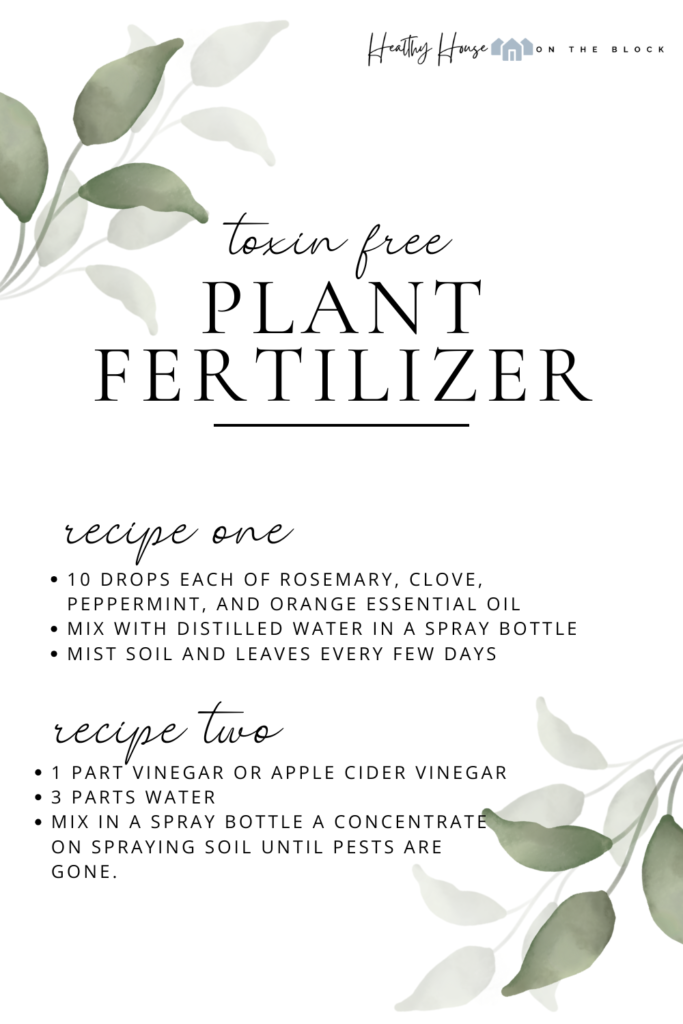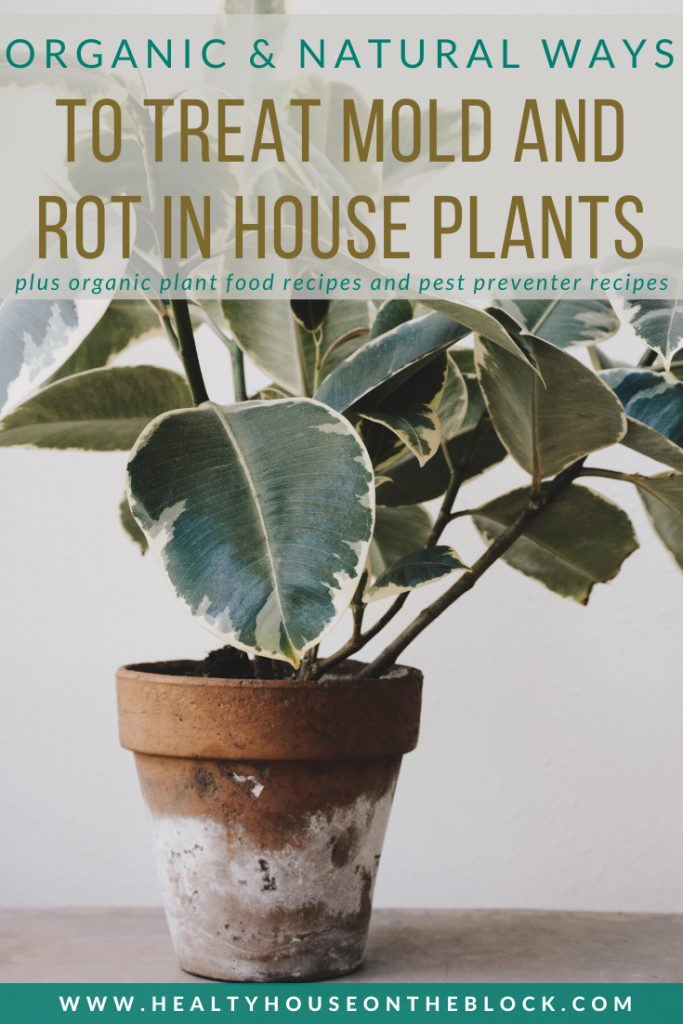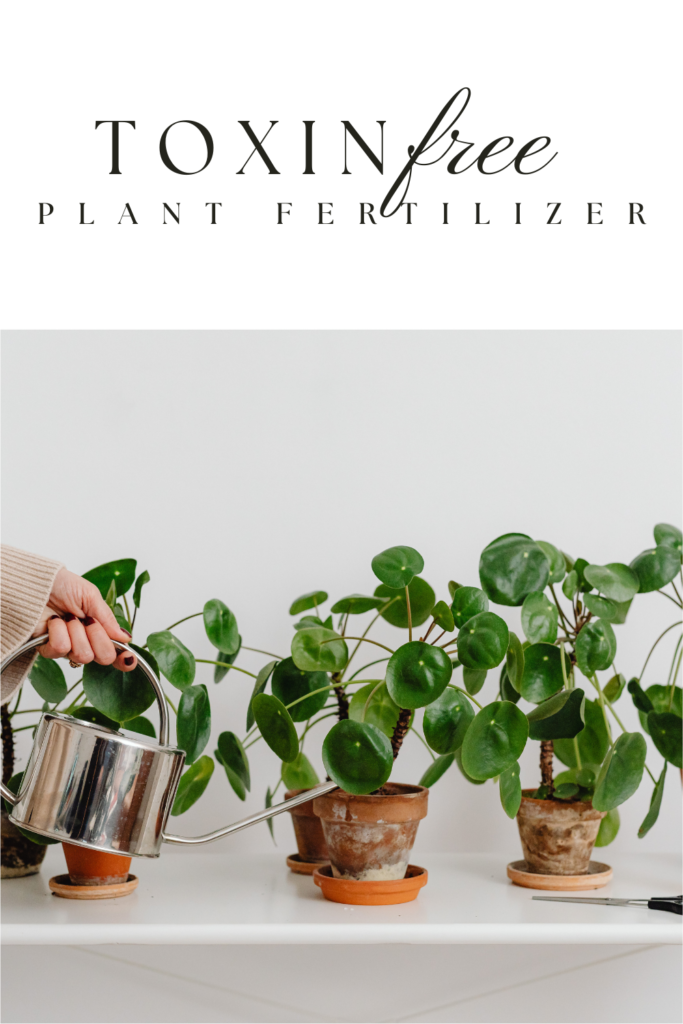We all want cleaner indoor air—and one of the simplest ways to improve your home’s air quality is by adding an air purifying house plant to your space. But just like any living thing, your houseplants need the right care to thrive. The problem? Many commercial plant foods and pest products contain synthetic chemicals and toxins that can actually pollute your home instead of helping it.
As a healthy home expert and building biology practitioner, I’m always mindful of what I bring into my space. That includes what I feed my houseplants. Choosing a homemade fertilizer for indoor plants gives you complete control over what ends up in your home’s air, surfaces, and dust. And when you’re trying to reduce toxins, that control is everything.
In this post, I’ll share some of the best natural, non-toxic ways to care for your air purifying house plant—including homemade fertilizers, pest control, and mold prevention. Plus, I’ll dive into what the science says about the hidden risks in synthetic plant products and the health benefits of keeping greenery inside your home.

Why Conventional Fertilizers May Be Harmful Indoors
Most conventional plant fertilizers—especially those marketed as “indoor safe”—contain synthetic nitrates, phosphates, and petroleum-derived ingredients. Here’s why that matters:
- Indoor chemical exposure accumulates. A 2021 study published in Environmental Science & Technology found that volatile organic compounds (VOCs) from chemical fertilizers and pesticides can build up in enclosed spaces and contribute to indoor air pollution.
- Dust matters. Research shows that chemical residues from fertilizers can bind to household dust, which we inhale and ingest daily—especially children and pets.
- Body burden is real. Continuous low-level exposure to chemicals like urea, ammonium nitrate, and synthetic growth regulators can contribute to your body’s toxic load (body burden), potentially affecting hormone balance, respiratory health, and more.
When we’re actively trying to reduce toxins in our homes, switching to organic and homemade fertilizers is a small change that makes a big impact.
What Makes an Air Purifying House Plant So Beneficial?
If you’re new to the idea of houseplants helping your health, let me give you a quick overview. Houseplants aren’t just for aesthetics—they’re a healthy home essential. Here’s why:
- Air purification: According to NASA’s Clean Air Study, houseplants like spider plants, pothos, and peace lilies can remove common indoor pollutants like formaldehyde, benzene, and trichloroethylene.
- Dust reduction: A 2019 study in Building and Environment confirmed that interior plants can reduce airborne dust by up to 20%.
Mental health perks: Research from the University of Hyogo in Japan found that even a small indoor plant on your desk can reduce anxiety and improve focus.
Watering the Right Way Before Using Homemade Fertilizer for Indoor Plants

Watering plants the correct way is even more important than finding a homemade fertilizer for indoor plants. It’s the basic care that helps a plant flourish and stay healthy. This is where you’ll need to know the care instructions for whatever houseplant you have.
If you don’t have an idea of what type of houseplant you have, you can use your phone and take a picture to try and determine what type of plant you’re working with and go from there. Otherwise, it might take some trial and error to determine what exactly your plant prefers.
Here are some basic tips to watering a plant the right way:
- Use a spray bottle or mister. This is a really great way to make sure that your plant is getting a little moisture without watering. If you choose this method you’ll likely have to mist your plant daily, if not multiple times a day. (These misters are THE cutest addition to your green thumb hobby!)
- Avoid standing water in pots. This is a HUGE no-no. It’s why mold, mildew and pests infiltrate your plants. If you do begin to see these problems, you’ll likely have to correct the issue before adding any sort of homemade fertilizer for indoor plants. A good way to avoid standing water is to avoid over-watering.
- Use room temperature water. Even water that’s a little on the warmish side is beneficial to plants. They don’t like the shock of cold water to the soil. If you have a container that you can reuse and keep filled, you can leave it out for your plant watering. My grandma used to use jars and keep them above her fridge where they warmed up a bit. She would keep them there for a day or so before watering them, and I’ll admit she’s quite the green thumb and hasn’t killed a plant since I’ve been alive. So there may just be something to this tip.
- Make sure your planter has good drainage. I’ve researched this topic quite a bit as so many cute planters offer no drainage at all. There are ways around using a planter without drainage though. You can simply add a nursery pot with drainage right inside your planter, which will allow water to drain out as one idea. You can also drill your own hole in a planter, however I’d recommend watching a few videos and testing this method out on a practice pot first.

Organic Pest Preventer
Before I get to the homemade fertilizer for indoor plants that you can make, let’s run through some ways you can combat common houseplant problems.
First, if your plant has become infested with either gnats or other pests that have made their home within the soil, you can be sure you’ll need to take care of the problem BEFORE even thinking about adding a homemade fertilizer for indoor plants.
These two methods are COMPLETELY natural and relatively inexpensive. You can mix up a small spray bottle or use a mister to spray on the leaves and soil of your plant with either of the following solutions.
Organic pest preventer #1: 10 drops rosemary essential oil, 10 drops clove essential oil, 10 drops peppermint essential oil & 10 drops orange essential oil. Mix with water in a small spray bottle and mist onto soil and leaves.
Organic pest preventer #2: Mix 1 part vinegar or apple cider vinegar and 3 parts water in a spray bottle and focus on spraying the soil. Repeat until pests are eradicated.

Organic Ways to Prevent Rot & Mold
If you haven’t allowed great drainage or you’ve gotten in a habit of over-watering your house plant, you might run into an issue with rot or mold in your soil or around your plant. This must be taken care of before you add any homemade fertilizer for indoor plants.
Luckily, taking care of this mold or rot is relatively easy.
Method #1: 25 drops tea tree oil and water in a spray bottle can prevent fungus and prevent it from taking hold in your plants
Method #2: If you have fuzzy white mold on your soil or plant, simply dab it with a cotton ball soaked in rubbing alcohol to remove the mold and fungus.
Method #3: Apply a mix of 1 tsp baking soda and a few drops of dish soap to spray a bottle full of water to the soil.
Method #4: Mix 1 part hydrogen peroxide and 4 parts water in a spray bottle and spray the plant. Be sure to wipe it off after about 10 minutes to prevent any other issues.

Organic Plant Food & Fertilizer
Now that we’ve addressed all the potential issues your plant may be facing, here are a few of my favorite homemade fertilizers for indoor plants.
- Organic Coffee: Use organic coffee grounds to help kill weeds and pathogens in the soil. Organic coffee also adds potassium and magnesium to the soil as food, which are great for plant growth.
- Green Tea. The tannic acid in the green tea will increase nutrient levels in soil and improve oxygenation, which helps roots grow healthy as it fertilizes.
- Epsom Salts . This option provides magnesium and sulfate, which allow plants to grow fuller and greener. Simply dissolve 2 tbsp epsom salt in 1 gallon of water and mist plant.
Other ways to increase growth and naturally fertilize your plants are these two methods:
- Growth Accelerator: Mix 10 drops lemongrass essential oil, 10 drops geranium essential oil and 10 drops frankincense essential oil in a spray bottle. Spritz on your plant and in the soil to promote growth.
- Horticultural Charcoal: This is a great trick for adding nutrients to the soil and making sure your plant absorbs more of the food and natural homemade fertilizer for indoor plants you’re giving it. It acts as a conditioner for the soil and absorbs impurities from the soil. It feeds for a long period of time and helps with drainage as well.
Other Important Tips:
After you’ve applied your homemade fertilizer for indoor plants and gotten rid of any other problematic ailments, these tips will help your houseplants flourish and grow.
- Don’t move plants around too much. Plants acclimate themselves to climate slowly, and when moved frequently, they have a hard time adjusting. This can result in fewer flowers, slower growth or the plant beginning to die off.
- Prune regularly. This means cutting off dead branches and shoots. These can attract bugs or begin to rot, affecting the rest of the plant.

Choosing a toxin-free way to care for your air purifying house plant isn’t just about greener leaves—it’s about creating a cleaner, healthier home for your family. The products we use indoors matter. When we opt for homemade, organic, and plant-based solutions, we lower our exposure to harmful chemicals and support a more balanced, breathable environment.

Share this:
- Click to share on Facebook (Opens in new window) Facebook
- Click to share on LinkedIn (Opens in new window) LinkedIn
- Click to share on Reddit (Opens in new window) Reddit
- Click to share on Pinterest (Opens in new window) Pinterest
- Click to print (Opens in new window) Print
- Click to share on X (Opens in new window) X







